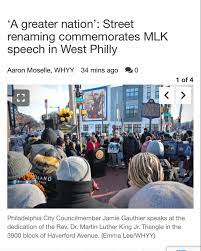The fight for workers’ rights has taken center stage across the U.S., and Whole Foods clerks in Philadelphia have made history by successfully winning their union drive. But how did they do it? What challenges did they overcome? And what does this mean for other workers? Let’s dive in and uncover the journey that led to this victory.
Table of Contents
| Sr# | Headings |
|---|---|
| 1 | The Road to Unionization |
| 2 | Why Whole Foods Workers Pushed for a Union |
| 3 | The Role of Corporate Resistance |
| 4 | Organizing Amidst Fear and Pressure |
| 5 | Strategies That Led to Success |
| 6 | The Final Vote and Victory |
| 7 | Reactions from Workers and Management |
| 8 | What This Means for Other Whole Foods Locations |
| 9 | Unionizing in the Face of Amazon’s Opposition |
| 10 | The Bigger Picture: Worker Rights in Retail |
| 11 | Challenges Ahead for the Union |
| 12 | How This Victory Can Inspire Other Workers |
| 13 | What Comes Next for Whole Foods Employees? |
| 14 | Key Takeaways from the Union Drive |
| 15 | Final Thoughts on the Fight for Workers’ Rights |
The Road to Unionization
For years, workers at Whole Foods have voiced concerns about fair wages, better working conditions, and job security. The Philadelphia location became the battleground where employees decided enough was enough.
Why Whole Foods Workers Pushed for a Union
Many clerks cited unfair scheduling, stagnant wages, and lack of benefits as reasons to form a union. They wanted a say in their workplace policies and protections against sudden layoffs.
The Role of Corporate Resistance
Whole Foods, owned by Amazon, has historically been anti-union. Employees faced corporate-led meetings discouraging unionization and even subtle threats about job security.
Organizing Amidst Fear and Pressure
Despite pushback, workers found creative ways to organize. Private group chats, secret meetups, and community support played a crucial role in keeping momentum alive.
Strategies That Led to Success
From building solidarity to seeking legal advice, workers used various strategies:
- Peer-to-peer outreach: Educating coworkers on union benefits.
- Legal backing: Ensuring they had the right to organize.
- Community alliances: Gaining local support to amplify their voice.
The Final Vote and Victory
After months of campaigning, the decisive vote was held. Against all odds, Philadelphia Whole Foods clerks emerged victorious, marking a historic moment for retail workers.
Reactions from Workers and Management
Employees celebrated their newfound collective power, while management issued cautious statements, acknowledging the vote but maintaining their corporate stance.
What This Means for Other Whole Foods Locations
This win is more than local—it sets a precedent for other Whole Foods locations, proving that organizing is possible even against corporate giants.
Unionizing in the Face of Amazon’s Opposition
Amazon, Whole Foods’ parent company, has spent millions opposing unions. This victory challenges Amazon’s narrative and gives hope to thousands of retail workers nationwide.
The Bigger Picture: Worker Rights in Retail
Retail workers across the U.S. face similar struggles. This union drive highlights the ongoing battle for fair treatment in the industry.
Challenges Ahead for the Union
Winning the vote is just the beginning. Negotiating contracts, enforcing worker rights, and preventing retaliation are the next hurdles.
How This Victory Can Inspire Other Workers
Just like a domino effect, one win can inspire others. This success story could fuel union movements in various industries beyond Whole Foods.
What Comes Next for Whole Foods Employees?
Negotiations with management will be the next phase. Workers will push for fair wages, better schedules, and long-term job security.
Key Takeaways from the Union Drive
- Workers can organize despite corporate resistance.
- Solidarity and community support are crucial.
- Persistence pays off in the fight for better conditions.
Final Thoughts on the Fight for Workers’ Rights
This union drive is not just about one store—it’s a symbol of changing tides in the labor movement. Philadelphia Whole Foods clerks have paved the way for others to follow.
FAQs
1. Why did Philadelphia Whole Foods clerks want to form a union?
They sought better wages, improved working conditions, and a voice in workplace decisions.
2. How did Whole Foods management respond to the union drive?
Management attempted to discourage unionization through meetings and anti-union messaging.
3. What were the key strategies used to win the union vote?
Workers used peer education, legal support, and community alliances to strengthen their campaign.
4. Will other Whole Foods locations follow this example?
It’s possible! This victory sets a precedent and may inspire other locations to organize.
5. What happens now that the union is formed?
Negotiations will begin to secure fair contracts and enforce the rights of unionized employees.
